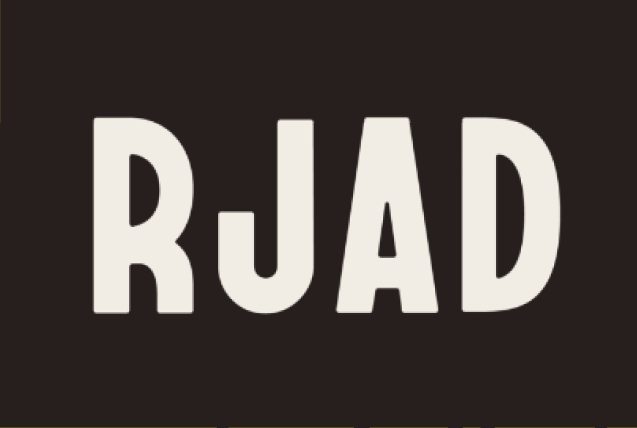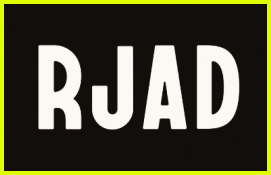A World Without Incarceration
About This Class
Description
Suggested class case studies will include examples covering the following five main thematic areas:
Theme I: Self-Expression and Self-Reflection: How the visual arts can be used as a form of self-expression and to better internalize one’s own human rights and help shape public policy. This also includes examining art and artistic practices which have healing, emotional and transformative effects on ourselves, in relationship to incarceration. This will also include an exploration of formerly incarcerated visual artists who have created art as a response to the human rights violations within the carceral systems. Examples include: artwork focusing on mass incarceration, racial justice, and racial policing (e.g. artwork created out of the Black Lives Matter movement within the United States), etc. and artwork created by and centers the stories of directly impacted community members.
Theme II: Commemoration and Memorialization: How human rights atrocities (and the ending of atrocities) are memorialized and/or commemorated through the visual arts, in efforts to heal and provide closure to the trauma from the past from racial injustice throughout the United States. Examples include: artwork focusing on the history of enslaved peoples (e.g. the Equal Justice Initiative’s Legacy Museum and the National Memorial for Peace and Justice, the dismantling of Confederate monuments), etc.
Theme III: Human Rights Iconography and Imagery: How certain human rights images have been popularized by iconic public art works, across movements, and throughout various social justice campaigns and how these images have shaped and challenged public perceptions around policing and mass incarceration. This also includes a deeper examination of when art within and from movements becomes commodified or co-opted by larger corporations and institutions, including across social media. Examples include: the Hands Up, Don’t Shoot imagery used by Damon Davis, etc. What does it mean to use the arts to envision a new world where all people are free?
Theme IV: Decriminalization of Public Art: This includes an exploration of advocacy and abolitionist measures that can be taken in order to decriminalize public and street art within communities, along with an analysis of public space and what it means for members of a community to take ownership over public spaces through the visual arts. Examples include: Maria Gaspar’s 96 Acres Project.
Theme V: Advocacy and Activation: How the visual arts can be used to convey a message and/or activate communities for policy change. This includes an examination of artwork that inspires and is used within abolitionist organizing efforts. Part of this thematic area will also center art that invites a reimagining of a world without prisons, jail, or police. Examples include: work by formerly incarcerated community members and leaders including Russell Craig, Jesse Krimes, et al. and also a deep examination of Dr. Nicole Fleetwood’s Marking Time: Art in the Era of Mass Incarceration.
Some core questions that will be explored in this course include:
- What are the connections between the aesthetics of art and the effects it has on one’s capacity to self-reflect, transform, and process one’s interactions with mass incarceration and the criminal injustice system?
- In what ways does art affect or help create policy changes around mass incarceration? Must art always be responsible for creating concrete policy change within movements? How is this impact measured, if at all?
- In what ways can art be used as a tool within abolitionist organizing spaces? What are concrete examples of grassroots organizations who have successfully used art across their many campaigns?
- How do artists, especially those directly impacted by the carceral state, use art as a mechanism for coping, healing, and processing the destructive and violent nature of the criminal justice, and other interlinking, systems?
- Can art affect our language, especially the language we use to describe community members formerly and currently part of, or directly impacted by, the mass incarceration system? How can we use art to transform this language?
- Is it possible to create spaces for artists to safely create art in their communities, without being criminalized? If so, what do these spaces look like and what measures need to be taken to create these spaces?
- In what ways can community members use art to transform their own communities into abolitionist spaces? What does an abolitionist space actually look like and who is responsible for creating these spaces?
Topics/ Learning Objectives
- Understand and identify several of the cultural, political, social context/purposes of art as it relates to the concept of abolition.
- Analyze the use of visual art by artists and activists as it relates to cultural organizing around abolition.
- Dissect and analyze the connections between art, human rights, self-reflection, and healing.
- Reflect on power, privilege, and identity as they pertain to the creation of art in resistance to the carceral state.
- Familiarize themselves with key stakeholders in the intersection of art, organizing, and abolition, through engagement with and research of selected activists, organizers, artists, and organizations.
- Write, create, and reflect more critically about their own personal experiences around the concept of abolition.
- Recognize specific examples of how visual art has been and is currently being used to help advocate for concrete change in public policy across communities in the United States.
- Engage with and examine art that encourages self-reflection and transformation around abolition practices.
- Integrate their own art-making as a reflective tool to better understand human rights violations within the mass incarceration and criminal justice systems within the United States.
- Identify specific case studies where the visual arts have helped transform cultural misconceptions around mass incarceration, the criminal justice system, and/or abolition practices.
- Employ artistic tools to more effectively educate others in their community around mass incarceration.
- Understand and identify how and why art can be used as a tool to better understand, engage, and activate one’s community around human rights violations within the criminal justice system.
- Understand how art can be both used as a tool to educate communities around mass incarceration as connected to the historical legacy of slavery within the United States and also as a tool to reimagine a more equal society.
Required Material
Guides for Developing a Manifesto by Swarthmore College
Find Online
Most Influential Protest Art by Thessaly La Force, Zoë Lescaze, Nancy Hass and M.H. Miller
Find Online
Before the Law by Jennifer Gonnerman
Find Online
Kalief Browder, 1993–2015 by Jennifer Gonnerman
Find Online
‘No Crime is Worth That’ – Inside the Lawlessness at the Rikers Jail Complex by Astead W. Herndon
Find Online
What is Prison Art and Why Is It Important? by Alex Greenberger
Find Online
Can You Draw in Prison? by Prison Insight
Find Online
If You’re Black: Rest is Power by Michael Love Michael
Find Online
Caring for Ourselves as Political Warfare by Adrienne Maree Brown
Find Online
Talks About the National Memorial for Peace and Justice and the Legacy Museum from Enslavement to Mass Incarceration by Bryan Stevenson
Find Online
Slavery to Mass Incarceration by Equal Justice Initiative
Find Online
Sing Sing Museum by Next City
Find Online
Confederate Statues Come Down Around U.S., But Not Everywhere by John Burnett, Piper McDaniel
Find Online
The Woman Who Took Down A Confederate Flag on What Came Next by Tariro Mzezewa
Find Online
Rewriting the Future Using Science Fiction to Re-envision Justice The Fictions and Futures of Transformative Justice by Walidah Imarisha
Find Online
The Fictions and Futures of Transformative Justice by Walidah Imarisha, Alexis Gumbs, Adrienne Maree Brown, Mia Mingus, and Leah Lakshmi Piepzna-Samarasinha
Find Online
What Would a World Without Prisons Be Like? by Dorothy Wickenden
Find Online
What is Transformative Justice? by Barnard Center for Research On Women
Find Online
Visualizing Abolition by UCSC Find Online
Meet the Former Federal Prosecutor Who Wants to Abolish Prisons Abolition And Reparations: Histories of Resistance, Transformative Justice, And Accountability by Patrisse Cullors
Find Online
96 Acres Project by Maria Gaspar
Find Online
The Jerome Project by Titus Kaphar
Find Online
How 5Pointz Artists Won $6.75 Million in Lawsuit against Developer That Destroyed Their Work by Alan Feuer
Find Online
Artists Have Final Victory in a Case of Destroyed Graffiti by Maria Cramer
Find Online
Bogotá’s State-Sanctioned Street Art Survive a Crackdown by the New Mayor? by Adharanand Finn
Find Online
A Guide on How to Unleash Black Imagination to Shape the Future by Aisha Shillingford
Find Online
Intelligent Mischief
Find Online
‘I Want Us To Dream A Little Bigger’: Noname And Mariame Kaba On Art And Abolition by Sidney Madden, Sam Leeds, Rodney Carmichael
Find Online
USDAC Juneteenth: Resources for Imagination + Abolition
Find Online
Worth Rises
Find Online
The Digital Abolitionist
Find Online
Abolition Democracy’s Archive of Abolition Podcasts
Find Online
#FreeThemAll: Survived and Punished Gallery
Find Online
Cosmic Possibilities: An Intergalactic Youth Guide to Abolition by Project Nia
Find Online
A World Without Police: Abolition and Community Safety by Brooklyn Public Library Find Online
To Build a Future Without Police and Prisons, We Have to Imagine It First by Walidah Imarisha
Find Online
Suggested Material
Abolition: A Journal of Insurgent Politics. If You’re New to Abolition: Study Guide by Abolition Collective
Find Online in your local library
Are Prisons Obsolete? by Angela Davis
Find on Bookshop, Online, or your local library
Marking Time: Art in the Age of Mass Incarceration by Nicole Fleetwood
Find on Bookshop, Online, or your local library
The New Jim Crow: Mass Incarceration in the Age of Colorblindness by Michelle Alexander
Find on Bookshop, Online, or your local library
We Do This ‘Til We Free Us by Mariame Kaba
Find on Bookshop, Online, or your local library
Abolition For The People: A Movement for a Future Without Policing and Prisons by Colin Kaepernick
Find on Bookshop, Online, or your local library
Becoming Abolitionists: Police, Protests, and the Pursuit of Freedom by Derecka Purnell
Find on Bookshop, Online, or your local library
Just Mercy: A Story of Justice and Redemption
Find on Bookshop, Online, or your local library
Abolitionist Arts Education Curriculum Guide by NYC Arts
Find Online
Abolition Playlist curated by Rebel Steps via The Digital Abolitionist
Find Online
The Critical Resistance Abolition Organizing Toolkit by Critical Resistance
Find on Spotify


